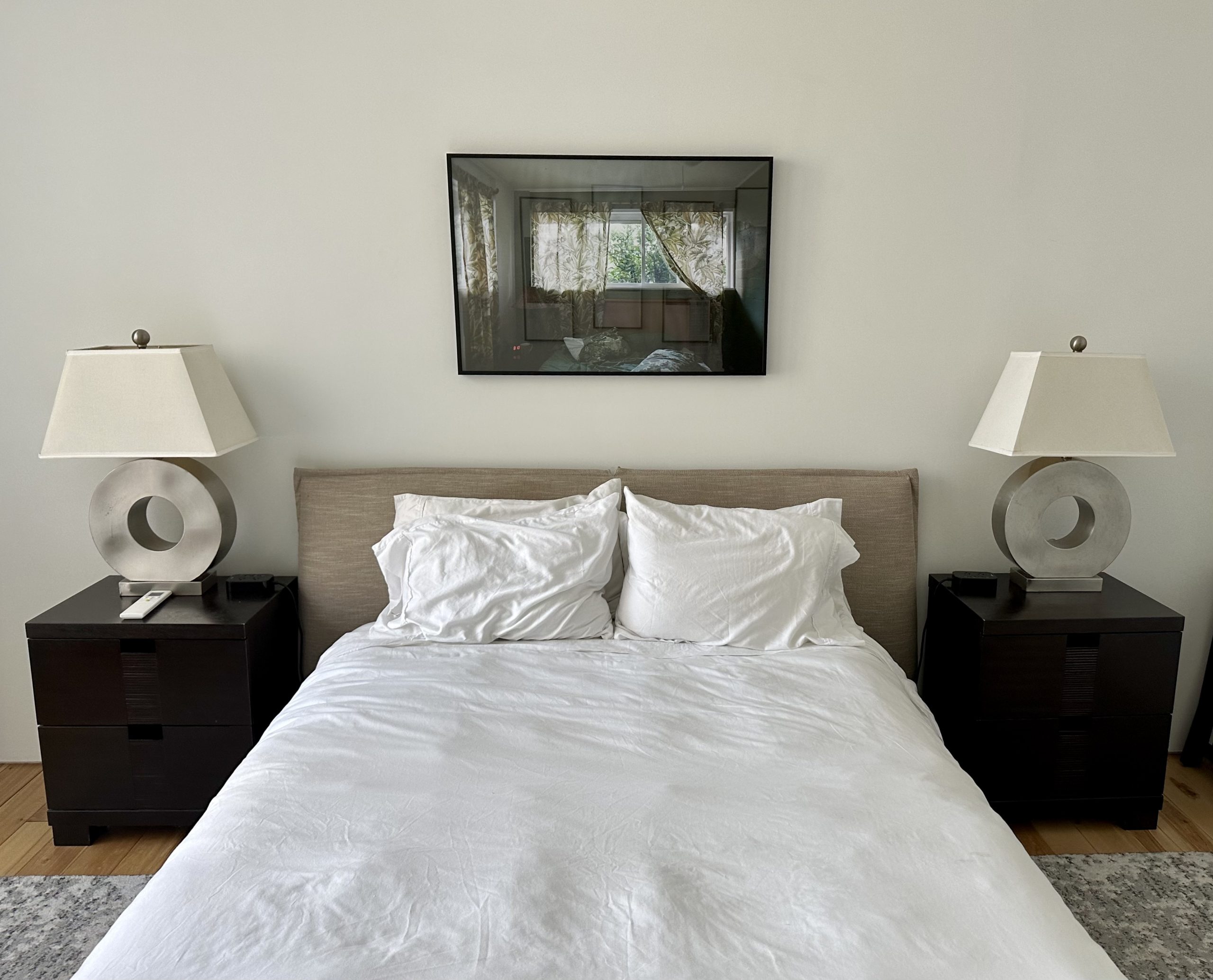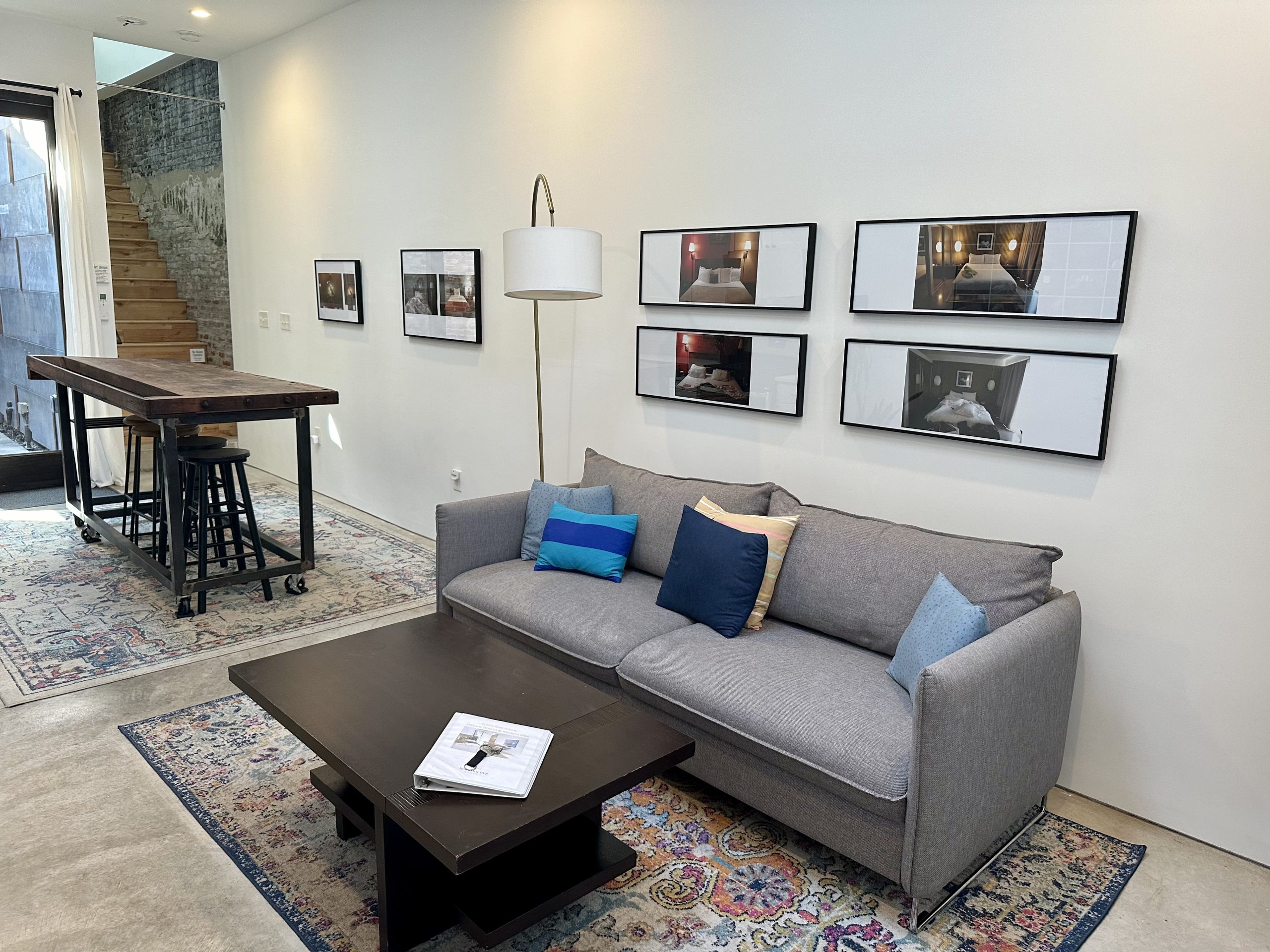Sheridan Costa
Home Is Where You Lay Your Head
E1507 Fall Showcase (2024)
Curated by Dustin Kuhns
Humans share sleep rituals with the rest of the animal kingdom. We are not unique—neither as a species among species, nor as individuals among individuals. We all sleep—isn’t it peculiar? All animal life, to not just survive but thrive, requires essential, routine periods of unconsciousness.
Seduced by machines and technology, we might wonder, “Will we ever evolve out of it?”
But that seems awfully hubristic. Sleep is a solution chosen across millions of years of evolution. We were selected among those species that value laying our heads. Sheridan’s series, taken over decades, reawakens the mystique of our species’ ritual worship of our circadian cycle.
With quiet scenes that blend intimacy, domesticity, and transience, “Home Is Where You Lay Your Head” toes a profound line between nostalgia for “home” and the eeriness of our impermanence.

In Sheridan’s frame, each bed captures a moment in a familiar ritual—sheets, comforters, nightstands. But side by side, the differences in these beds do not betray their singularities. Instead of differences that divide and categorize, these differences inspire reverence for their gestural universality—the soft folds, the hard shadows of artificial light, the somnolent idiosyncrasies of nightstand trinkets.
Ordinary, transient places become mirrors, offering glimpses of our shared vulnerability and the quiet moments that unite us. On these bedtime altars, we sacrifice a third of our lives to unconsciousness in service to our waking selves. Mysterious, ephemeral, yet familiar, these beds make us nostalgic for our own—wherever and whenever they may be.

Yet for all their universality, these rooms feel wholly other. They appear from ambiguous places and times, a mystique intensified by Sheridan’s curation of beds with sometimes anachronistic design homages. The beds beg us to introspect. So we somnambulate. Across the threads of our own nighttime rituals, we search for the bodies missing from these familiar scenes.
Sleep is an evolutionary protection mechanism, but seen in this documentary style, these beds tap into another deeply rooted instinct—something was here, but who? Or what?
Made beds prepare for a coming presence—but what is it? Messed beds relax from the suspense of holding presence—but who was it? There is an emotion here more haunting than mere absence: a failure of absence. This experience—call it eerie, in the spirit of the late Mark Fisher—incites us to consider the metaphysical scandals of contemporary life. What are these mysterious forces, that despite their absence we still feel, pulling strings on the rhythms of our lives?

Her “Made, Mess” diptychs double down on this failure of absence. The modern viewer, accustomed to relentless immediacy, finds their gestalt impulses reawakened. We approach the space before, after, and between the photos. Will a presence emerge from light captured—or uncaptured? Or will it haunt us? Absence fails to convince us that someone, or something, isn’t there waiting to be known, if only for a moment.
In the spaces between these images—between the made and the unmade—Sheridan’s work finds its resonance. Here, in the quiet moments before and after sleep, we are invited to confront our own impermanence and the fleeting nature of home. Her photographs don’t simply document; they beg that we pause, reflect, and embrace the mystery of our shared existence.
